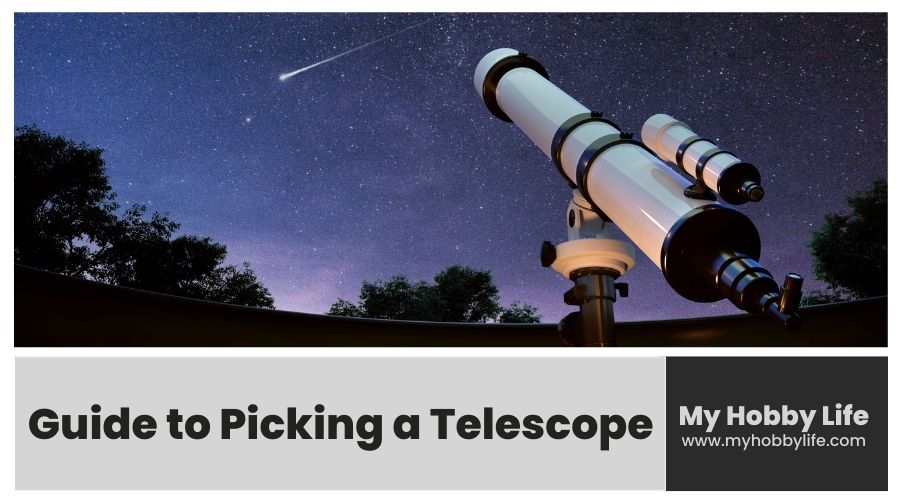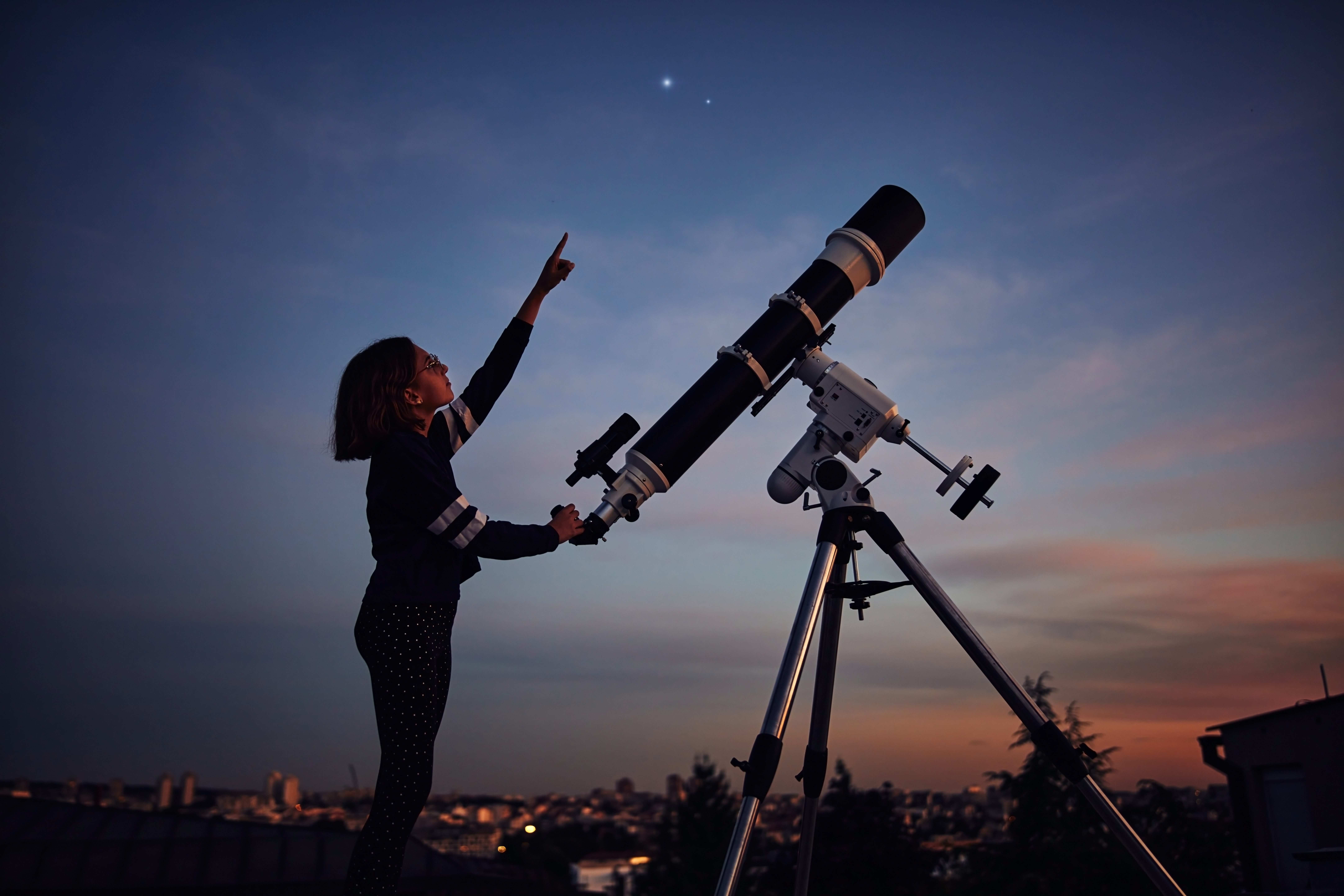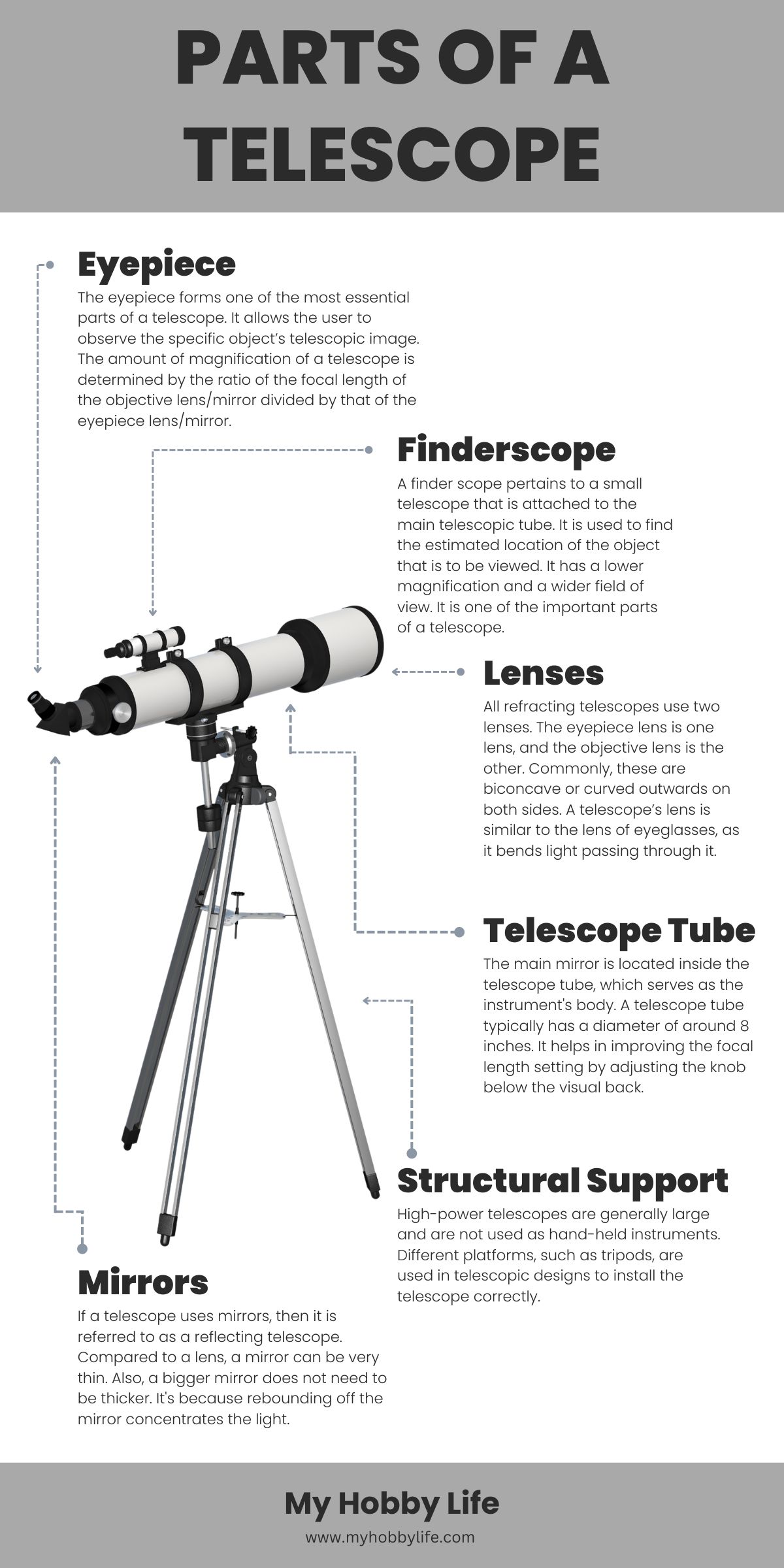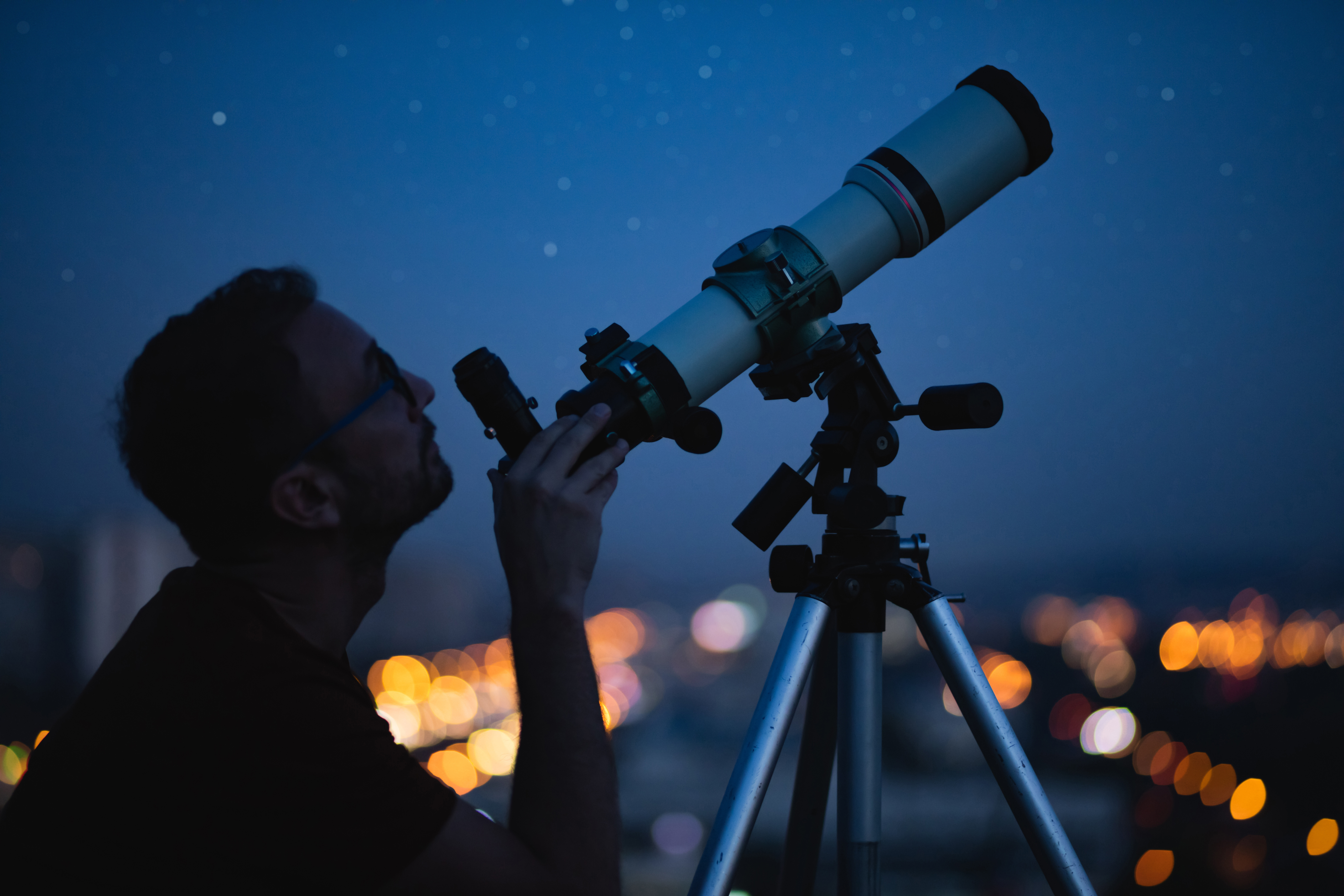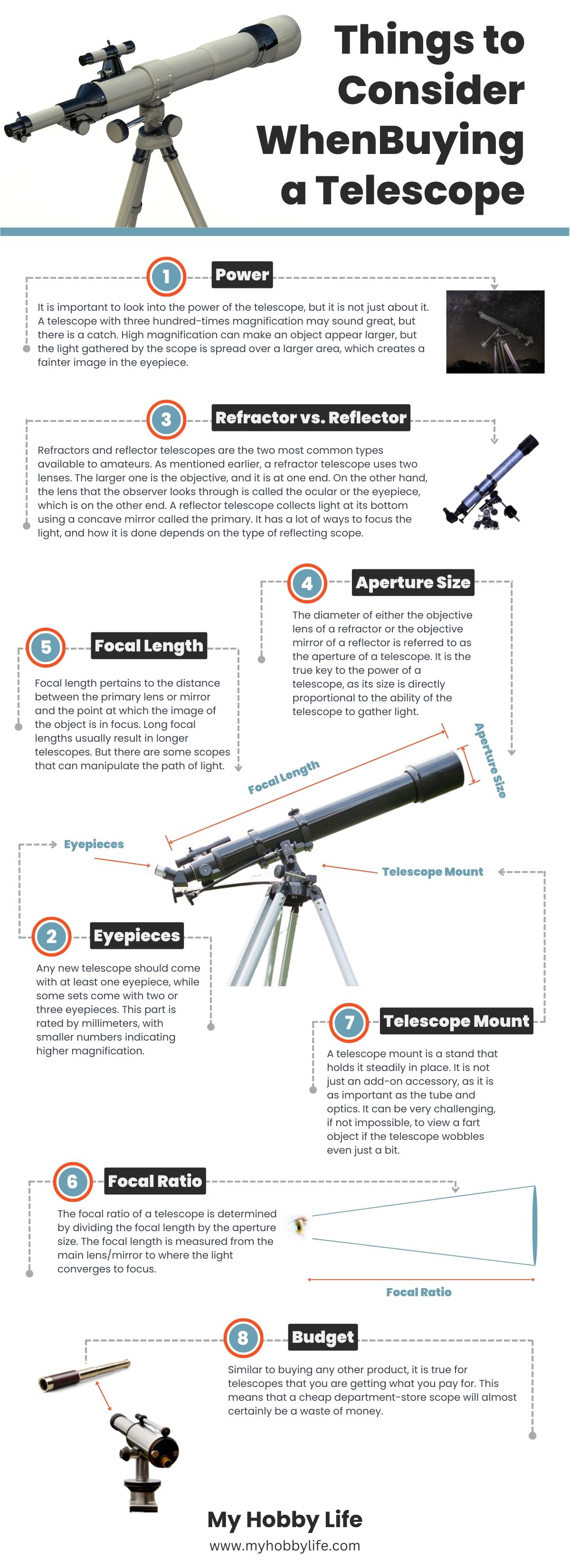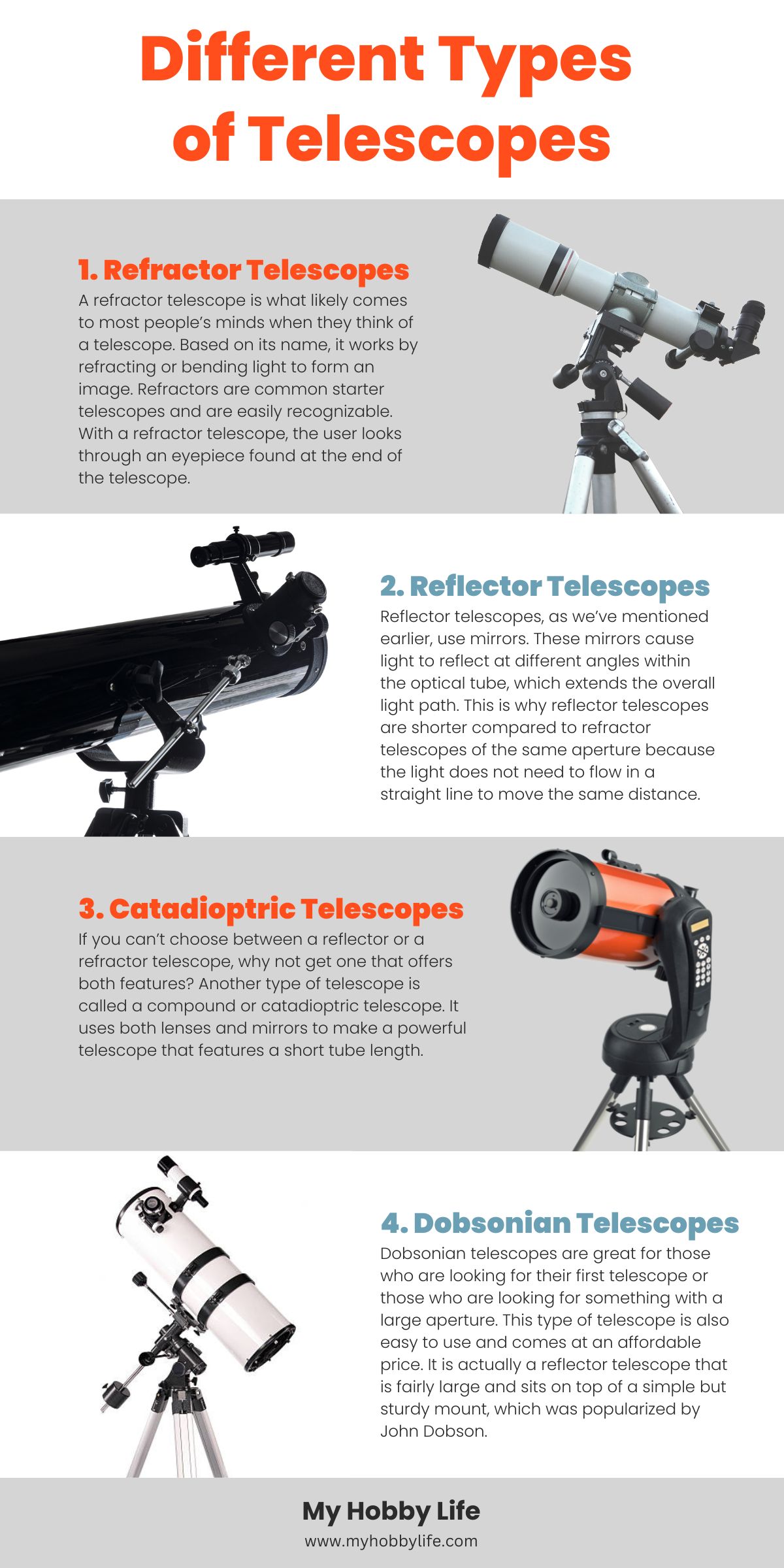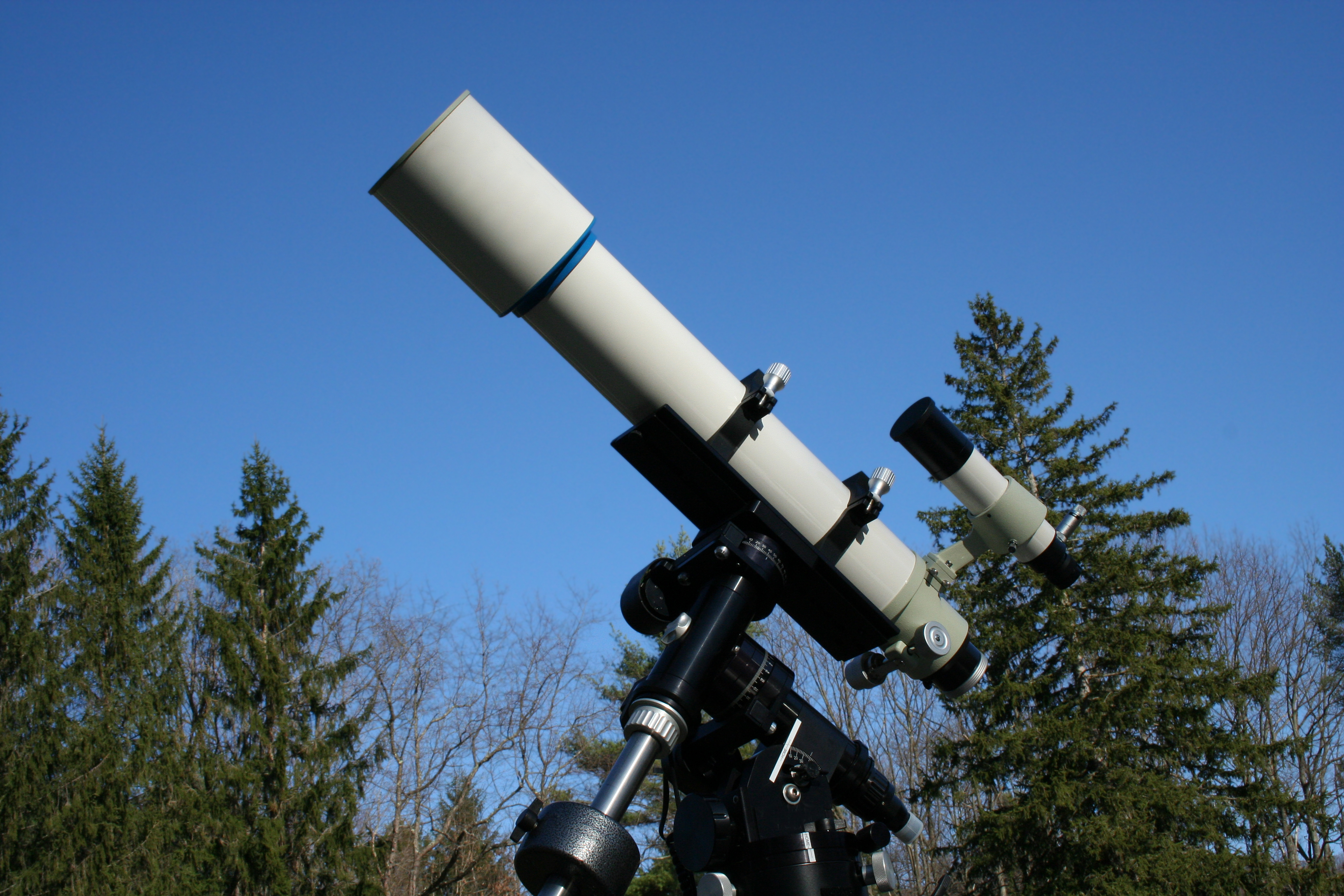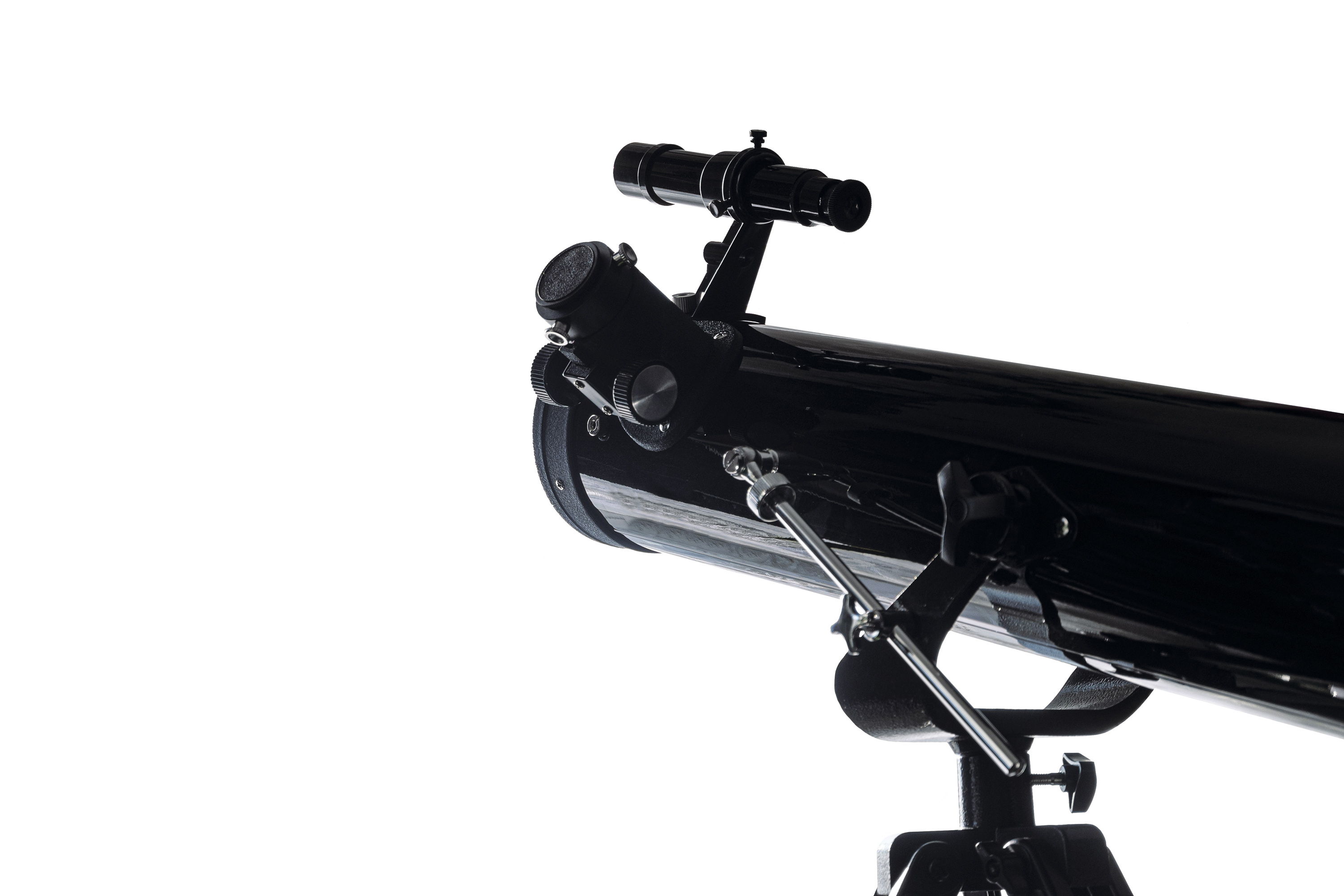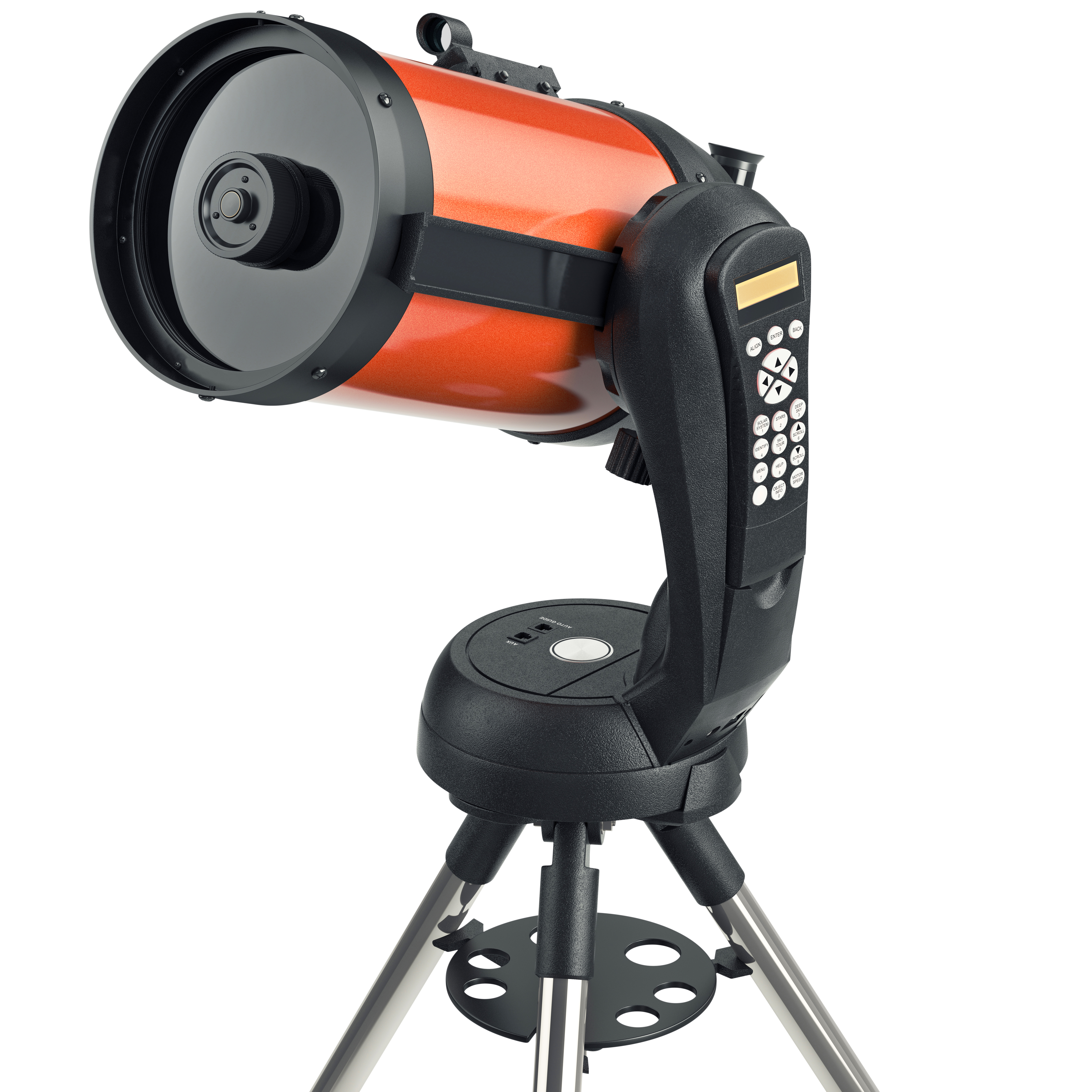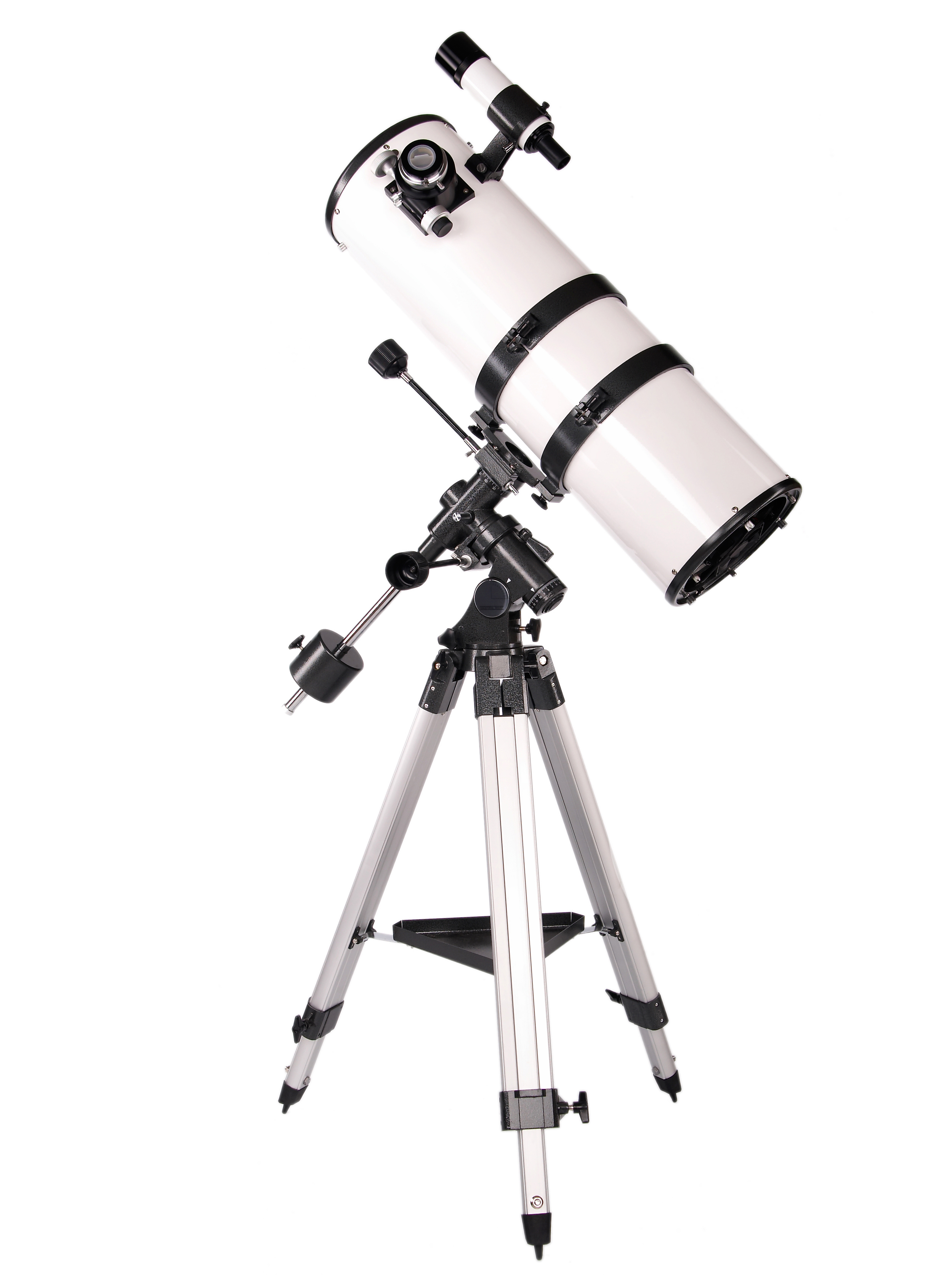Astronomy is the study of all things in the universe that are beyond the Earth’s atmosphere. These include objects that we can see with our naked eyes, such as the Sun, the Moon, the planets, and the stars. It also includes objects that we can only see with the use of telescopes and other instruments, such as faraway galaxies and tiny particles. There are also things in the universe that we can’t see at all, like dark energy and matter.[1]
If you are into astronomy, owning a telescope is one of the best ways to learn more about it. It is a tool that provides sky gazers a great way to see magnified views of objects in the sky. However, if you are thinking of buying a telescope, whether it is your first, second, or fifth one, it is essential to be fully informed before heading to stores so you can make the best choice. In addition, a telescope is a long-term investment. Therefore, doing your research, learning terminologies, and considering your needs are very important.
If you plan to buy a telescope but can’t decide what to get yet, we are here to help you. In this post, we are giving you a guide to picking a telescope.
Parts of a Telescope
Before we discuss the different options that you have when it comes to telescopes, let us first learn about their various parts. Being familiar with the different parts of a telescope is also essential to be able to choose the best one that will cater to your needs. Below are the various parts of a telescope:
Lenses
All refracting telescopes use two lenses. The eyepiece lens is one lens, and the objective lens is the other. Commonly, these are biconcave or curved outwards on both sides.[2] A telescope’s lens is similar to the lens of eyeglasses, as it bends light passing through it. However, in eyeglasses, it makes things blurry, while in a telescope, it makes faraway things look closer.[3]
If you are aiming to see far away objects, you need a telescope with a big powerful lens. However, the downside of a big lens is it is very heavy. When a telescope has a heavy lens, it can be challenging to hold it in the right place. In addition, as the lens becomes thicker, the glass stops more light that passes through it. Since the light is passing through the lens, the surface of the lens needs to be extremely smooth. Any flaws in the lens can affect the image, just like looking out through a dirty window.[3]
Mirrors
If a telescope uses mirrors, then it is referred to as a reflecting telescope. Compared to a lens, a mirror can be very thin. Also, a bigger mirror does not need to be thicker. It’s because rebounding off the mirror concentrates the light. Therefore, the mirror has to have the right curved shape. Additionally, making a huge, nearly perfect mirror is simpler than making a large, nearly perfect lens. In addition, since mirrors are one-sided, they are easier to clean and polish compared to lenses.[3]
One of the best things about mirrors is that they are not heavy. Since they are much lighter compared to lenses, they are easier to launch into space, too. In fact, space telescopes like the Hubble Space Telescope and the Spitzer Space Telescope are both reflecting telescopes that allow people to capture views of galaxies and nebulas that are far away from our solar system.[3]
Eyepiece
The eyepiece forms one of the most essential parts of a telescope. It allows the user to observe the specific object’s telescopic image. The amount of magnification of a telescope is determined by the ratio of the focal length of the objective lens/mirror divided by that of the eyepiece lens/mirror. The eyepiece is also part of the ocular lens. It improves the sharpness of the lens’s image and protects the ocular lens from harm that could result from a lens fall.[2]
Structural Support
High-power telescopes are generally large and are not used as hand-held instruments. Different platforms, such as tripods, are used in telescopic designs to install the telescope correctly. Many contemporary telescopic mounts give users the option to independently rotate the telescopic axis in both the horizontal and vertical planes. The horizontal rotation allows one to point directly or at an azimuthal angle. The vertical rotation, on the other hand, allows to elevate or depress of the telescope based on the requirements of the user.[2]
Telescope Tube
The main mirror is located inside the telescope tube, which serves as the instrument’s body. A telescope tube typically has a diameter of around 8 inches. It helps in improving the focal length setting by adjusting the knob below the visual back.[2]
Finderscope
A finder scope pertains to a small telescope that is attached to the main telescopic tube. It is used to find the estimated location of the object that is to be viewed. It has a lower magnification and a wider field of view. It is one of the important parts of a telescope.[2]
Things to Consider When Buying a Telescope
As we’ve mentioned earlier, a telescope is a long-term investment. Therefore, you need to make the right purchase and pick one that will foster a lifelong love of astronomy for you or your loved ones. To be able to pick the right telescope for your needs, below are the important things that you need to consider:
Power
It is important to look into the power of the telescope, but it is not just about it. A telescope with three hundred-times magnification may sound great, but there is a catch. High magnification can make an object appear larger. The light gathered by the scope is spread over a larger area, which creates a fainter image in the eyepiece.
There are times when lower magnification power gives a better viewing experience, especially if observers are looking at objects that are spread out across the sky, such as nebulae or clusters. In addition, high-powered scopes have specific requirements for eyepieces, too. Therefore, it is essential to do your research first about which eyepieces work best with a given instrument.[4]
Eyepieces
Any new telescope should come with at least one eyepiece, while some sets come with two or three eyepieces. This part is rated by millimeters, with smaller numbers indicating higher magnification. A 25mm eyepiece is common and ideal for most beginners.
A high-power eyepiece, just like magnification power, does not necessarily mean it can provide better viewing. For instance, it may allow you to see clear details in a small cluster. However, if it is used to look at nebulae, it will only show a part of the object. You also have to note that while a higher-magnification eyepiece may provide more details, it can be more difficult to keep an object in view. You may need to use a motorized mount in order to get the steadiest view in this case.
A lower-power eyepiece, on the other hand, makes it easier to find objects and keep them in view. It also requires less light. Therefore, viewing dimmer objects is easier. Both high and low-power eyepieces each have their place in observing, so their value depends on the interests of the user.[4]
Refractor vs. Reflector
Refractors and reflector telescopes are the two most common types available to amateurs. As mentioned earlier, a refractor telescope uses two lenses. The larger one is the objective, and it is at one end. On the other hand, the lens that the observer looks through is called the ocular or the eyepiece, which is on the other end. A reflector telescope collects light at its bottom using a concave mirror called the primary. It has a lot of ways to focus the light, and how it is done depends on the type of reflecting scope.[4]
Aperture Size
The diameter of either the objective lens of a refractor or the objective mirror of a reflector is referred to as the aperture of a telescope. It is the true key to the power of a telescope, as its size is directly proportional to the ability of the telescope to gather light. Also, the more amount of light a telescope can gather, the better image you will see.
However, it doesn’t mean you need to buy a telescope with the largest aperture you can find. If your telescope is inconveniently large, you are less likely to use it. For amateurs, the ideal are 2.4-inch and 3.1-inch refractors, and 4.5-inch and 6-inch reflectors.[4]
Focal Length
Focal length pertains to the distance between the primary lens or mirror and the point at which the image of the object is in focus. Long focal lengths usually result in longer telescopes. But there are some scopes that can manipulate the path of light. The focal length of the telescope is essential as it determines by what factor the scope magnifies. You can calculate the magnification of a telescope by dividing the focal length of the scope by the focal length of the eyepiece being used.[5]
Focal Ratio
The focal ratio of a telescope is determined by dividing the focal length by the aperture size. The focal length is measured from the main lens/mirror to where the light converges to focus. For instance, a telescope with an aperture of 4.5 inches and a focal length of 45 inches has a focal ratio of f/10. Therefore, a higher focal ratio implies higher magnification, while a lower focal ratio, like f/7, is ideal for wider views.[4]
Telescope Mount
A telescope mount is a stand that holds it steadily in place. It is not just an add-on accessory, as it is as important as the tube and optics. It can be very challenging, if not impossible, to view a fart object if the telescope wobbles even just a bit. Therefore, getting a high-quality mount is ideal. There are two types of mounts available in the market today, which are the altazimuth and equatorial.
An altazimuth mount is similar to a camera tripod, which allows the telescope to move up and down, as well as back and forth. Equatorial mounts, on the other hand, are more complex, as they are designed to follow the movement of objects in the sky. Some higher-end equatorials come with a motor drive, which is used to follow the rotation of the earth. It also keeps an object in the field of view longer. There are also lots of equatorial mounts that come with small computers that aim the scope automatically.[4]
Budget
Similar to buying any other product, it is true for telescopes that you are getting what you pay for. This means that a cheap department-store scope will almost certainly be a waste of money. But this does not mean you need to get a very expensive one that will drain your bank account. Just try to ignore cheap deals at stores that do not specialize in telescopes. The best strategy is to buy the best one for your budget. That is why research is important before buying a telescope.[4]
Different Types of Telescopes
After learning about the different parts of a telescope as well as the things to consider when buying one, we are going to talk about the main part to be able to choose the right one for your needs. Below are the different types of telescopes and what each of them offers:
Refractor Telescopes
A refractor telescope is what likely comes to most people’s minds when they think of a telescope. Based on its name, it works by refracting or bending light to form an image.[5] Refractors are common starter telescopes and are easily recognizable. With a refractor telescope, the user looks through an eyepiece found at the end of the telescope, along a series of glass lenses, in order to see a magnified object in the night sky.
This type of telescope is best for seeing craters on the Moon, bright planets, as well as daytime landscapes and wildlife. Refractor telescopes are easily portable and simple to aim. However, bigger and more powerful ones can be more expensive and inconvenient to look through as their eyepiece is low to the ground.[6] There are many entry-level refractor telescopes that come on a simple-to-operate mount called altazimuth mount, and they are great first telescopes.[5]
Below are some examples of refractor telescopes to help you choose:
- Celestron AstroMaster 70AZ Refractor Telescope: This is a powerful refractor telescope, and it is also user-friendly. It features fully-coated glass optics, a lightweight but sturdy frame, two eyepieces, a red dot finder scope, and an adjustable-height tripod. It has high-quality 70mm optics that will allow you to observe celestial objects at night and terrestrial targets and landscapes during the day. It comes with a panning handle with Alt-Az control for accurate and smooth pointing.
- Gysker Astronomical Refractor Telescope: This refractor telescope has an f/6.7 focal length and 90mm aperture, a fully-coated optics glass lens with high transmission coatings for stunning images, and to protect your eyes at the same time. It includes three replaceable eyepieces and a Barlow lens. It allows for various viewing positions with an adjustable aluminum tripod.
Reflector Telescopes
Reflector telescopes, as we’ve mentioned earlier, use mirrors. These mirrors cause light to reflect at different angles within the optical tube, which extends the overall light path. This is why reflector telescopes are shorter compared to refractor telescopes of the same aperture because the light does not need to flow in a straight line to move the same distance. This type of telescope is less expensive because manufacturing large mirrors is usually cheaper than manufacturing large lenses.[7]
Since reflector telescopes use mirrors instead of lenses, their eyepiece can be placed in a more convenient location on the side of the telescope. This type of telescope is a popular choice for those who are looking to see deeper into the sky, such as viewing Jupiter’s moons, Saturn’s rings, nearby galaxies, and nebulae. Reflector telescopes are also referred to as Newtonian telescopes, as it was invented by Sir Isaac Newton.[6]
Below are some examples of reflector telescopes to help you pick:
- Orion StarBlast II 4.5 Equatorial Reflector Telescope: This reflector telescope features great optics, convenient portability, and easy-to-use operation. It can help you view the moon, the planets, as well as distant objects like star clusters and galaxies bright and clear. It also includes an equatorial mount, making it easy to keep moving objects centered in the eyepiece via its slow-motion controls. It also comes with two eyepieces and two power views, along with a DeepMap, MoonMap, phone camera adapter, and an adjustable-height tripod.
- Coleman Reflector Telescope with Tripod: This reflector telescope features a 700mm focal length. It has a maximum magnification of 140x. It also comes with four lenses, a finderscope, Starry Night CD software, an aluminum tripod, and an accessory tray.
Catadioptric Telescopes
If you can’t choose between a reflector or a refractor telescope, why not get one that offers both features? Another type of telescope is called a compound or catadioptric telescope. It uses both lenses and mirrors to make a powerful telescope that features a short tube length.
Like a refractor telescope, its eyepiece is still placed at the end of the telescope. However, its shorter length means that it is not as inconvenient to look through. Compared to reflectors and refractors, catadioptric telescopes are more expensive. However, they are far more portable than reflectors for the same magnifying power.[6]
There are many variations of this type of telescope design, including Schmidt-Cassegrain and Maksutov-Cassegrain. Since it uses mirrors like a reflector, it will require collimation. But unlike with reflectors, this process needs to be performed far less frequently, especially when it is well taken care of. Due to its portability, it is a great investment for both beginners and experienced astronomers.[7]
Below are some examples of catadioptric telescopes to help you choose:
- Celestron CPC® Deluxe SCT Telescope: This telescope comes with 8-inch Edge HD Optics and StarBright XLT Coatings. It features an ultra-reliable NexStar Computerized Navigation System with SkyAlign and a 40,000-object database. It is also equipped with a 50mm finder scope and a 40mm Plossl eyepiece. It also comes with a heavy-duty tripod.
- Maksutov-Cassegrain Telescope: If you want a more affordable option, this beginner telescope is great. It has a Maksutov-Cassegrain design that delivers vivid, high-contrast images for daytime viewings like birds and wildlife. But it also allows astronomical explorations, such as viewing the craters of the Moon, Saturn, Jupiter, and more.
- Celestron Advanced VX Schmidt-Cassegrain Telescope: This telescope includes an advanced VX computerized German equatorial mount. It also comes with a 40mm 1.25-inch eyepiece, a 1.25-inch 90-degree diagonal mirror, a tripod, and NexStar+ hand control. It offers 41% more light gathering compared to a 9.25-inch telescope. It is a great telescope for more advanced astronomers.
Dobsonian Telescopes
Dobsonian telescopes are great for those who are looking for their first telescope or those who are looking for something with a large aperture. This type of telescope is also easy to use and comes at an affordable price. It is actually a reflector telescope that is fairly large and sits on top of a simple but sturdy mount, which was popularized by John Dobson.
The good thing about this type of telescope is its simplicity. It is easy to use as it only pans left and right and up and down. It is also easy to set up as it can be ready in just a few minutes. Lastly, it is very affordable, and a heavy-duty mount is not required. However, it has the same downsides as a reflector telescope. If it is not mounted equatorially, it will not track objects easily compared to other telescopes. But it is a great choice if you are starting out in astronomy and searching for an affordable telescope.[5]
Below are some examples of Dobsonian telescopes to help you choose:
- Orion SkyQuest XT8 Classic Dobsonian Telescope Kit: This is a simple telescope that will help you view objects in the deep sky, such as galaxies, nebulas, and star clusters. It has a stable Dobsonian base that provides vibration-free images. It also comes with a few accessories, such as lenses, maps, a flashlight, and an adapter for smartphones for taking photos through the telescope’s eyepiece.
- Sky-Watcher Flextube 200 Dobsonian Telescope: This telescope has a large aperture that will provide you with a bright, bold viewing experience. It has an innovative collapsible design that allows for the optical tube to collapse for portability. It has easy-to-control handles for accurate movement and 94% reflective mirrors for exceptional views. It also comes with different accessories, such as eyepieces and a finder scope.
Conclusion
Choosing the right telescope may seem like a challenge for a lot of people. However, by having enough knowledge about the different options, as well as by determining your needs, you will be able to choose the best one that will help you learn more about the celestial objects in the night sky. We hope that this post helped you learn more about how to pick a telescope.
References
[1] OLogy, E. (n.d.). What is astronomy? American Museum of Natural History. Retrieved October 27, 2022, from https://www.amnh.org/explore/ology/astronomy/what-is-astronomy
[2] Chakraborty, S. (2020, September 26). 6 telescope parts: how to use (complete guide!). Lambda Geeks. Retrieved October 27, 2022, from https://lambdageeks.com/steps-to-use-a-telescope-parts-of-a-telescope/
[3] Erickson, K. (2021, September 30). How do telescopes work? NASA. Retrieved October 27, 2022, from https://spaceplace.nasa.gov/telescopes/en/
[4] Greene, N. (2020, January 20). 7 things to know about buying a telescope. ThoughtCo. Retrieved October 27, 2022, from https://www.thoughtco.com/how-to-buy-a-telescope-3073716
[5] Saxon, E. (2022). Different types of telescopes. Home page. Retrieved October 27, 2022, from https://www.saxon.com.au/different-types-of-telescopes
[6] Maciel, T. (2017, October 10). How to Buy a Telescope. The National Space Centre. Retrieved October 27, 2022, from https://spacecentre.co.uk/blog-post/how-to-buy-a-telescope/
[7] Sanchez, A. (2022, October 16). Types of telescopes explained – learn what fits your needs at opt. OPT Telescopes. Retrieved October 27, 2022, from https://optcorp.com/blogs/telescopes-101/the-basic-telescope-types
